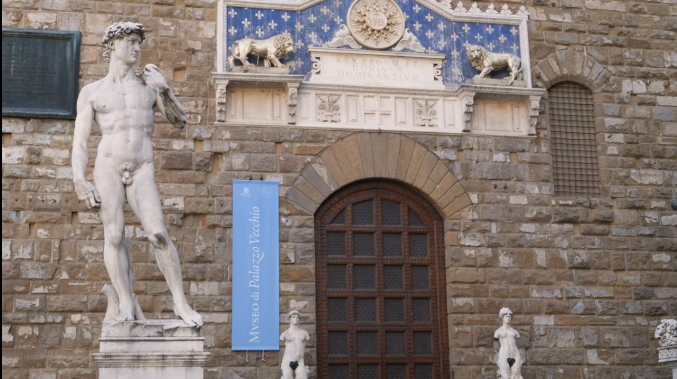
| The "David" now lives in the Academia Gallery of Fine Arts in Florence, Italy. For 369 years it lived outside in front of the Palazzo Vecchio. It was placed there in 1504 and moved indors in 1873 to the Academy. A copy of the "David" was made and placed where it used to stand. This is a picture of the copy and where it stsnds today, |
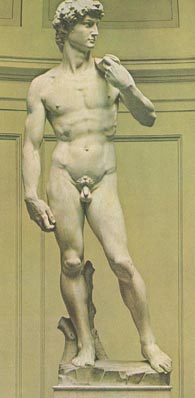
|
The marble stone from which the David was carved was damaged
and abandoned by other sculptors.
Read the history of
the statue
here.
Was David the shepard bi-sexual? |

Vancouver Clay Model Torso |

|
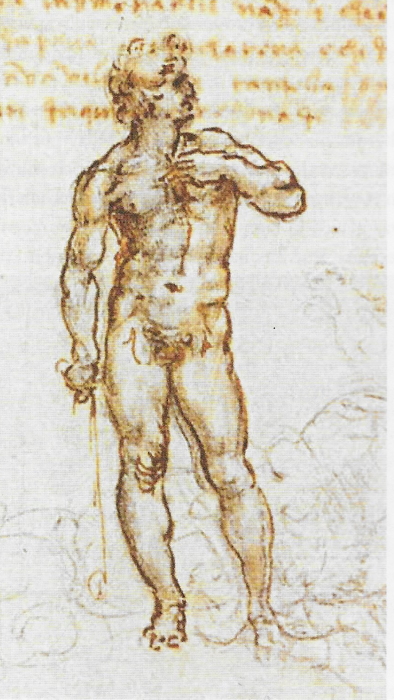
From Leonardo da Vinci's sketchbook, 1504
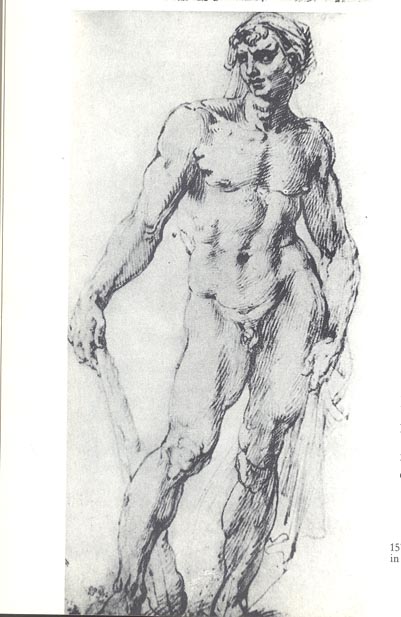
|
Rubens drawing of Michelangelo's Lost Hercules
This drawing may be a drawing of the clay Model for Hercules
and not the actual statue. Tintoretto, Rubens, El Greco
also did drawings based on Michelangelo's clay models.
Their drawings were done from the models and not the
statues,becuause what they drew was on the models
and not in the stautes. For exmaple
Tinotretto's drawing
of Michelangelo's Day's back show it completed as in the
model. On the Day statue the back is not completed it
is rough stone.
Read the history of the Hercules here. |
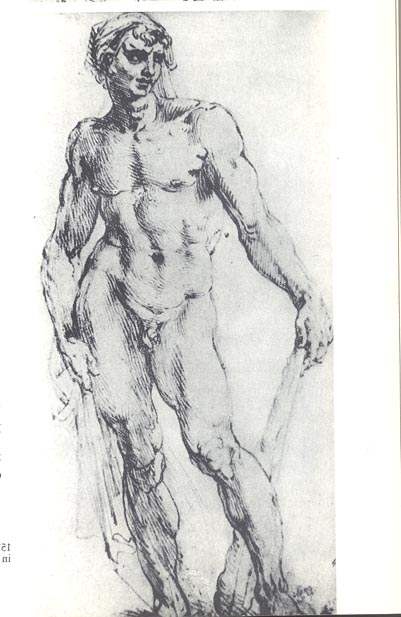
Rubens drawing of Michelangelo's Lost Hercules - reversed image |

|
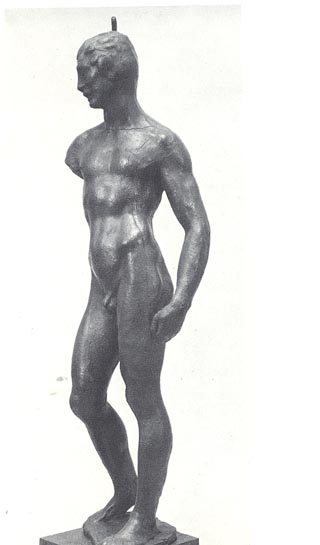
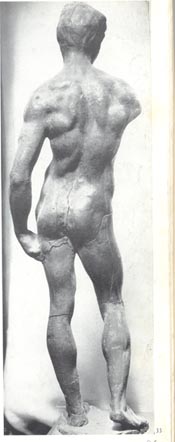
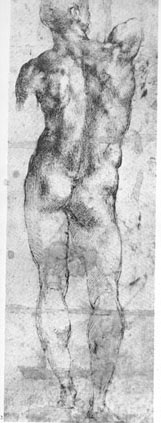
Wax Model at Michelangelo's house in Italy

Wax Model.. reveresed |

|

Another Wax Model at Michelangelo's House in Italy. |

|



M's First scketch for David...Donatello's Bronze David
| Bronze statuete after early model by Michelangelo around 1502. This statuete is in the Louvre in Paris, France. Michelangelo based this model on Donatello's earlier Bronze David |

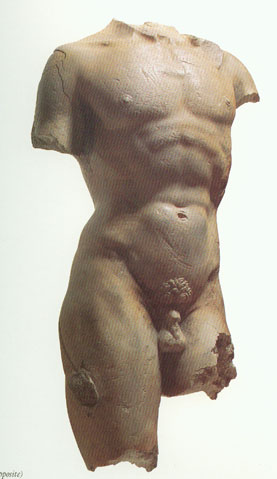
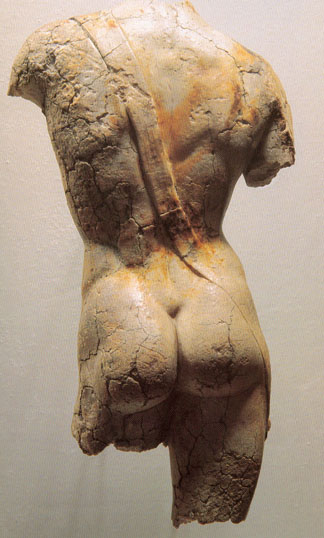
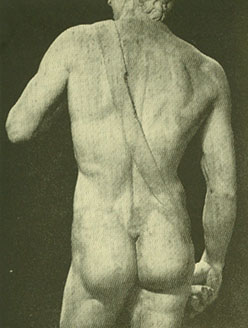
David...rear
Model Height: Torso 31.5 cm or 12.40 Estimated Full Model 51.5cm or 20.2 in
|
The stuco has alabaster in it so the model looks "alive" than if it were just plaster. The model shows fire damage and evidence that it was buried in the earth. This model was passed off as being the model was given to Cosmo I by Michelangelo himself. The model remained there in Cosmo III house till there was a fire in the area where the model wass kept on Dec 17, 1690. After the fire the model dispappered. As part of the scam owners asked Frederick Hartt to give his opinion as to the authenticity of the model. Hartt worte a book called "David, by the Hand of Michelangelo" in 1987. The model was given tests to determine if it was a fake. The tests were inconclusive. The model was reportedly bought at a street fair in Greece in 1982, although even this is questionable. The model may be real thing. If it is it does look similar to the wax model at Michelangelo's house. Click here to read the scam on this model According to Hartt's book, the plaster model shows signs of being cast from a wax model. So...this plaster model may have been cast from the wax model thats in Michelangelo's House The detail on the pubic hair would match up then it would prove it...only if a if a clear photo of the wax model was available). If they are the same than the wax model in Michelangelo's house is the wax model that was used to create the "David". Since the plaster was given to Cosmo I by Michelangelo. |
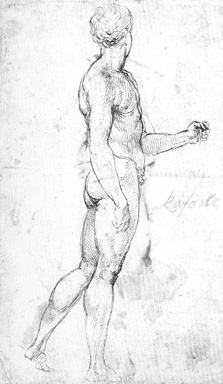
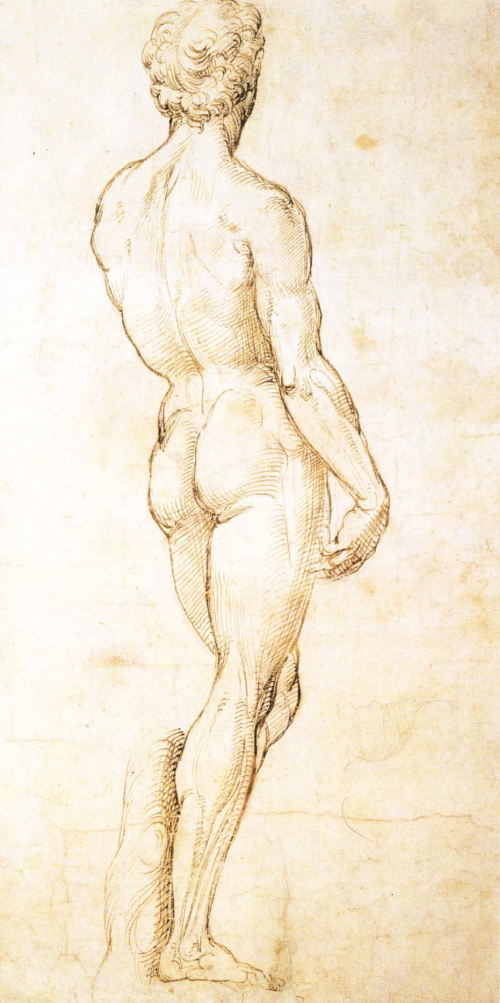
|
Rapael Drawing after lost Model. Or, Michelangelo
could have changed the soft wax model's Left arm to a new position |
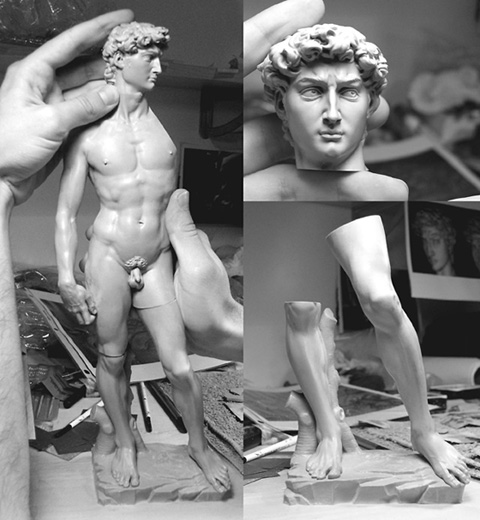
Assembling the computer made wax model
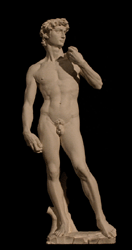
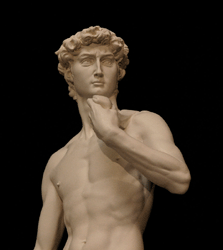
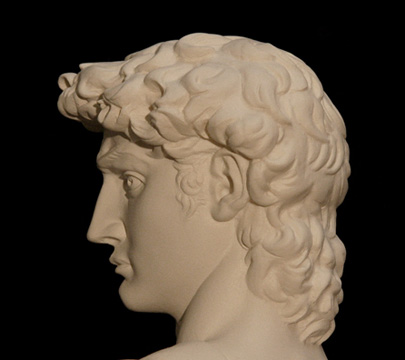
|
This 2004 15 inch computer made wax model was made by
Gentle Giant Studios
of Los Angeles using a 1.25-million polygon computer model
generated by the
Stanford Digital Michelangelo Project
A stone carver in Pietrasanta (a famous center of marble quarrying) warned them that, when you make a reduced-scale replica of a statue, you must soften its features; otherwise, it appears precious and cartoony. But being scientists from Stanford they ignroed the stone carvers advise when making the small model. IMHO, the Standford model looks too cartoony. |
| Also David's Loins where covered by a brass garland composed of 28 copper leaves, which where hung on the statue in 1504 before it was shown to the public. The garland remained on the statue for the first half of the 16th century. The hanging of the garland would have made it difficult to make a copy of the statue. |
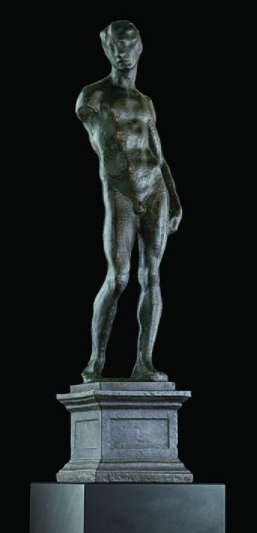
Bronze from 3D printed mold, Loveland Museum C0
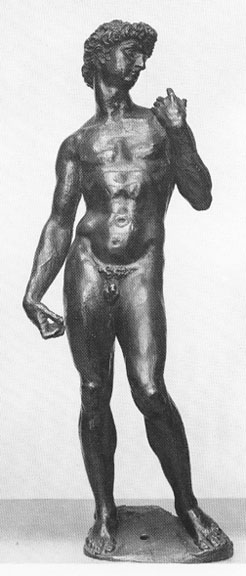
Bronze Model Louvre, Paris
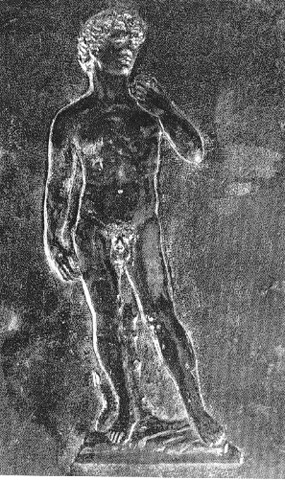
| Anonymous study, after the statue, early 16th century, bronze plaque 5 3/16 x 3 1/8 in Private COllection, USA |
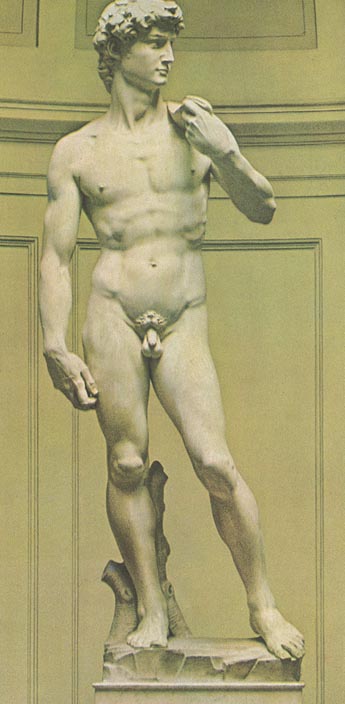
Michelangelo's David
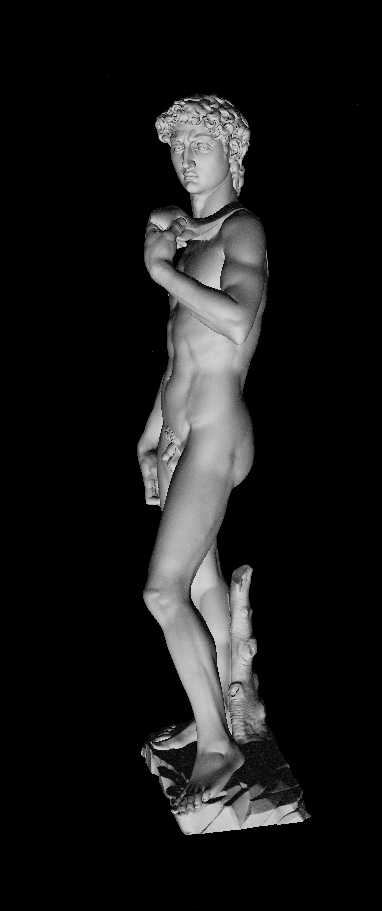
Side View of David from the digital model
This view is the view that was seen
when the statue was unveiled in 1504.
It was moved indoors in 1873.

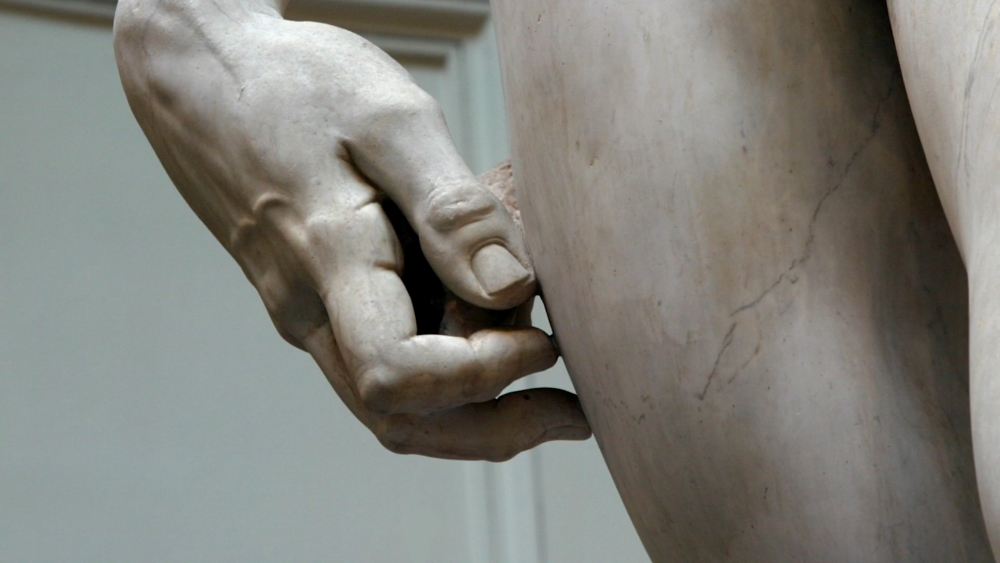
Is David's right hand holding a secret weapon?
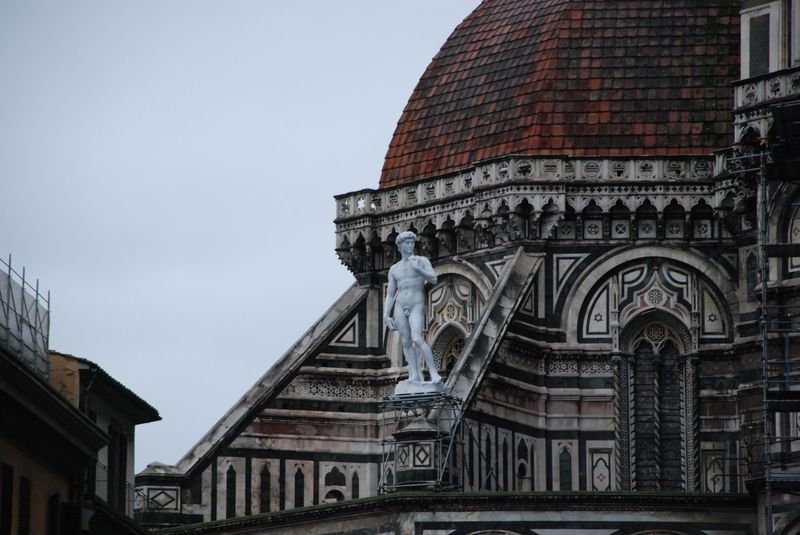
David as Michelangelo intended for it to be seen
|
The staue would have been 85 feet above street level on the backside of the cathedral. When you view a staute up high it becomes distorted like a close up photo, the rule of the thumb is closer to the eye the statue or image becomes bigger and the father away it becomes smaller. So to compensate Michelangelo made the statue's feet smaller than normal and made the hands, arm bigger than normal.
There also was a issue of moving a 4 ton 17 foot scultpure 85 feet
off the ground
safely.
|

David from the back
|
IMHO, One of the reasons, the David turned out
so good is because: This was the second
attempt and the second time is always better than
the first.
He also was a more experience sculptor now He was only 17 when he made the Herucles. And he also had just fininshed making the Pieta at 21. His Hercules which is very similar to David. All he did was reverse the Herucles statue. And change arms and legs etc to fit the new stone. Michelangelo was a master at piecing and reverse images and sculpting on the fly from his models. Wheras most other sculptures look like they WERE pieced to together. The wax model Michelangelo used for David no longer exists. It is reocrded to have been given by Michelangelo to Duke of Cosimo, It remainedin Cosimo's palace for many years thereafter. In 1690, during the time of Duke Cosimo III, there was a fire in the palace. Tthe fire destroyed 27 rooms in the palace. After the the blaze the statue became lost as it was no logner recorded in the palace inventoreis. Recently,a painting that where thought to have be lost in that fire have surfaced. So the Model could turn up. According to Vasari, Michelangelo's friend and biographer, the David was made from a small model. |